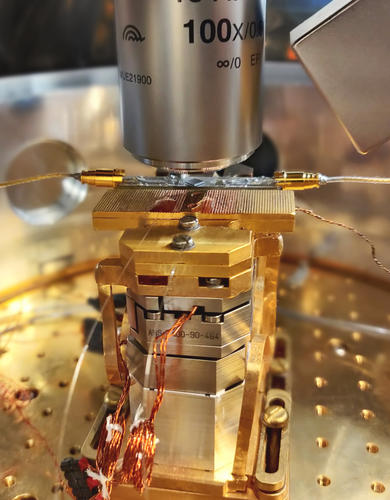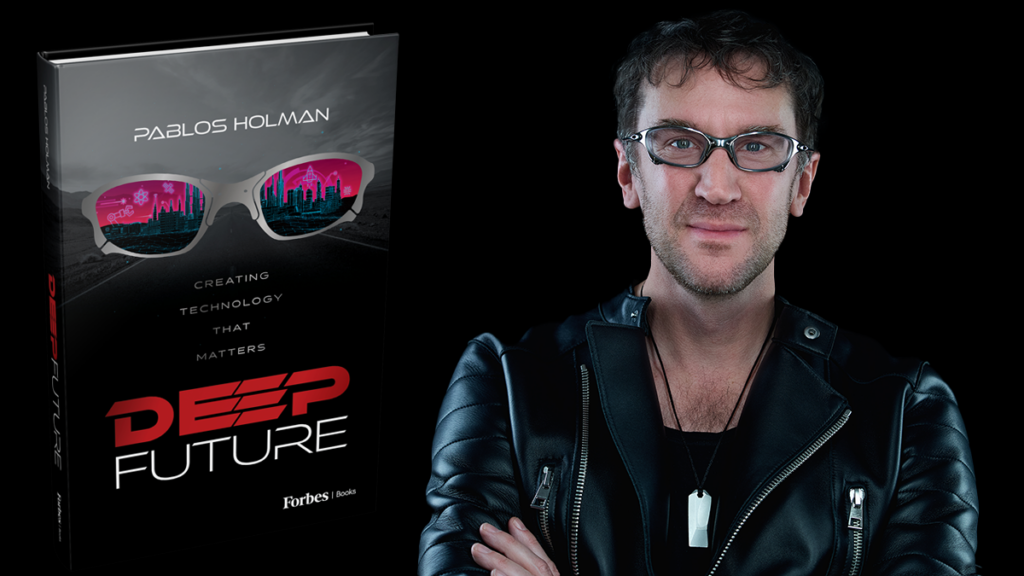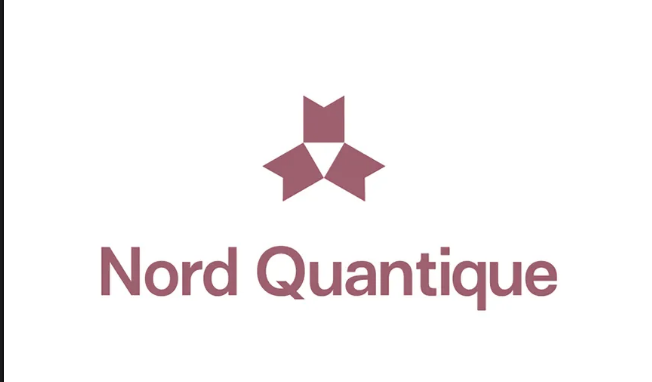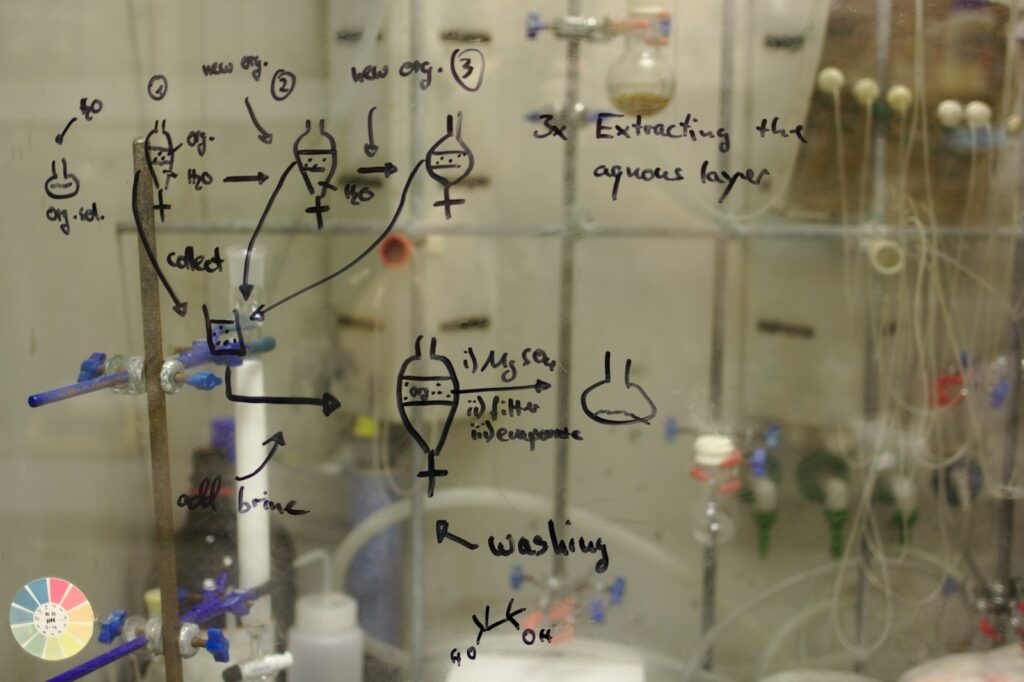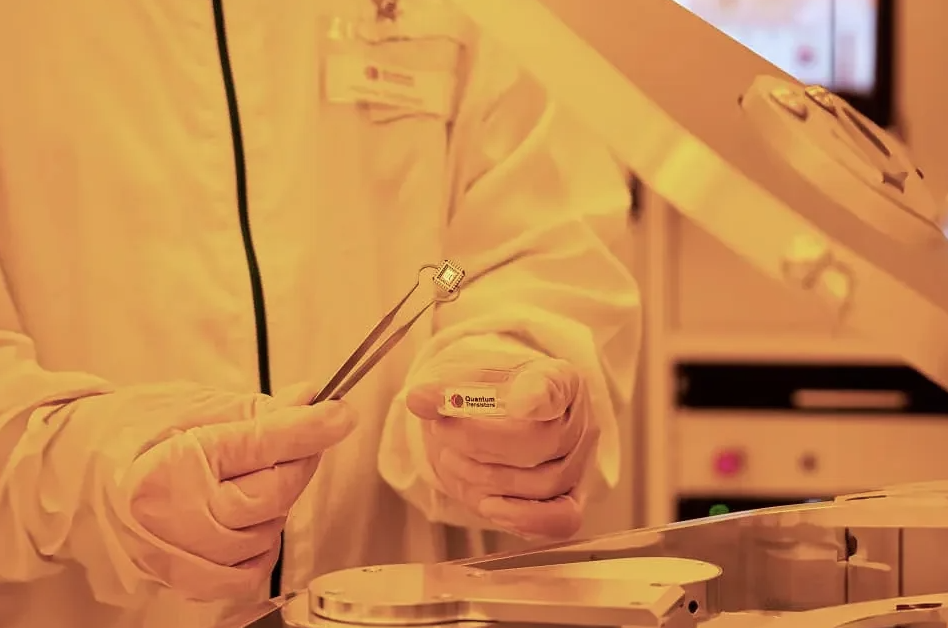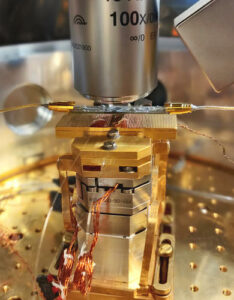
UNIVERSITY PRESS RELEASE — The “quantum internet” of linked quantum computers promises a world of unprecedented computer security and computational power.
Building blocks for a global quantum internet — including rudimentary quantum computers, quantum memories and long-distance telecommunications networks — already exist.
But one of the most difficult technological challenges is to integrate all these components into one device.
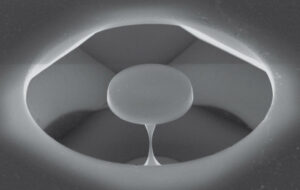
In a new study, University of Calgary physicists in the Faculty of Science used a nanoscale diamond device in a novel approach to couple qubits (quantum bits of information stored as quantum memories) with photons, or light.

In addition, the group’s custom-built device used light at the best possible wavelength for application in existing long-distance fibre-optic connections.
“We’ve shown that by putting this mechanical resonator in between the light and the qubit, we can find a way to get the light to ‘talk’ to the qubit,” says research group head and study co-author Paul Barclay, professor of physics in the Department of Physics and Astronomy.
“Our approach is an important step towards solving this problem in a totally new way,” Barclay says.
The group’s work is the first demonstration of such an interface intermediated by mechanical vibrations at room temperature, says PhD student and study co-lead author Prasoon Shandilya.
“Our approach simplifies the required connection between quantum memories and light,” he adds. “This approach is not limited only to our system, but is universal to all solid-state quantum memories.”
The team’s peer-reviewed paper, “Optomechanical Interface Between Telecom Photons and Spin Quantum Memory,” is published in the journal Nature Physics.
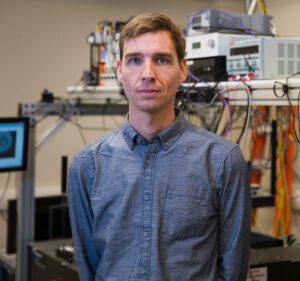
Culmination of a decade of work
The group’s work opens the door to a new direction in physics, called “spin-optomechanics,” says study co-author and then-postdoc at UCalgary, Denis Sukachev, now a research associate at Harvard University.
Other research groups and companies working on building a quantum network will be able to use the approach in their different quantum systems, Sukachev says. “It’s really a new idea. Nobody has shown it before.”
“This work connects two well-developed fields that had proven to be difficult to interface. It also alleviates the need to find the perfect spin-photon interface and thus gives more flexibility in the choice of spin qubit for the design of a quantum network,” says Dr. Benjamin Pingault, PhD, a postdoctoral fellow in applied physics at Harvard University, who wasn’t involved in the study.
The UCalgary team’s new work is a culmination of a decade of hundreds of experiments, and wouldn’t have been possible without the contributions made by each member of the research group, Barclay notes.
In 2016, Barclay’s group made the first-ever nanoscale optical resonator (or “cavity”) from a single crystal of diamond that is also a mechanical resonator. They also measured the high-frequency, long-lasting mechanical vibrations caused by the energy of light trapped inside the optical cavity.
In January 2020, the team showed they could transfer information encoded in light into their optomechanical diamond device’s mechanical vibration.
The group’s third big step was being able to connect telecom-wavelength light to electronic spins, or quantum memory, using light-driven “phonons” (mechanical vibrations) inside the device. That work, which started about four years ago, resulted in the paper.
The team’s diamond device acts as a “quantum transducer,” converting quantum information from one form into another, says study co-lead author Dr. David Lake, PhD, a former doctoral student with Barclay’s group who’s now at the California Institute of Technology.
“Our work represents a promising architecture,” Lake says. “It has the ability in the future to extend towards standard telecommunication links and interface with existing technology.”
The fifth co-author on the new paper, Matthew Mitchell, is now at the University of British Columbia.
UCalgary an international leader in quantum photonics
The University of Calgary’s quantum researchers, including three experimental groups as well as theorists, are recognized internationally as leaders in quantum photonics. The field involves developing micro- and nano-scale (about 100 times smaller than the width of a human hair) circuits for transmitting and manipulating light containing quantum bits of information, or qubits.
Through the university’s Institute for Quantum Science and Technology and its partnership with Quantum Alberta, UCalgary’s researchers are helping to drive Canada’s global quantum leadership.
In March this year, UCalgary’s quantum science team and the University of Alberta’s nanoscience team were together awarded $5.2 million from the Canada Foundation for Innovation.
At UCalgary, the funding is being used to build a nano-fabrication foundry on campus — the first in Canada with a focus on diamond photonics — for producing a large number of more efficient optomechanical diamond devices.
In June, UCalgary, the Government of Alberta and leading global tech company Mphasis announced the launch of the “Quantum City” initiative, which is expected to create up to 1,000 jobs and diversify the province’s economy.
If you found this article to be informative, you can explore more current quantum news here, exclusives, interviews, and podcasts.

